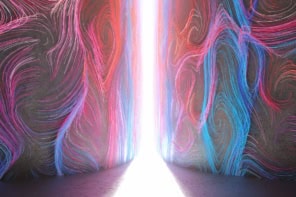One of the least-understood areas of physics is the boundary between quantum and classical mechanics. The transition from quantum to classical behaviour - a process known as decoherence - has been observed in microscopic systems before, but occurs much too rapidly to be observed in macroscopic systems. Now David Wineland and colleagues at the National Institute of Standards and Technology in Boulder, Colorado, have measured decoherence in a mesoscopic system - a single trapped beryllium ion - for the first time (Nature 403 269).
Quantum particles such as electrons can be in a superposition of two or more quantum states. This means that an electron can, for instance, be in two places at the same time. However, classical objects – such as the cat in Schrödinger’s famous thought experiment – clearly cannot be in two states (e.g., dead and alive) at the same time, even though they are composed entirely of quantum particles such as protons, neutrons and electrons.
It is impossible to observe the transition from quantum to classical behaviour in macroscopic systems because the decoherence occurs on timescales that are too short to be measured. However, it is possible with mesoscopic systems such as atoms and ions. In the Boulder experiment the ion is confined in a magnetic trap and cooled so that quantum effects dominate its behaviour. This behaviour can be observed in quantum interference fringes. Wineland and co-workers then introduced various external disturbances to the trap that would cause the quantum behaviour to decohere into classical behaviour. This resulted in a decrease in the contrast of the quantum interference fringes. The Boulder team used three different types of disturbances and their results agreed with theory in all three cases.
In addition to shedding light on one of the major problems in quantum theory, the results will also have significance for researchers hoping to build so-called quantum computers that exploit quantum superposition.



